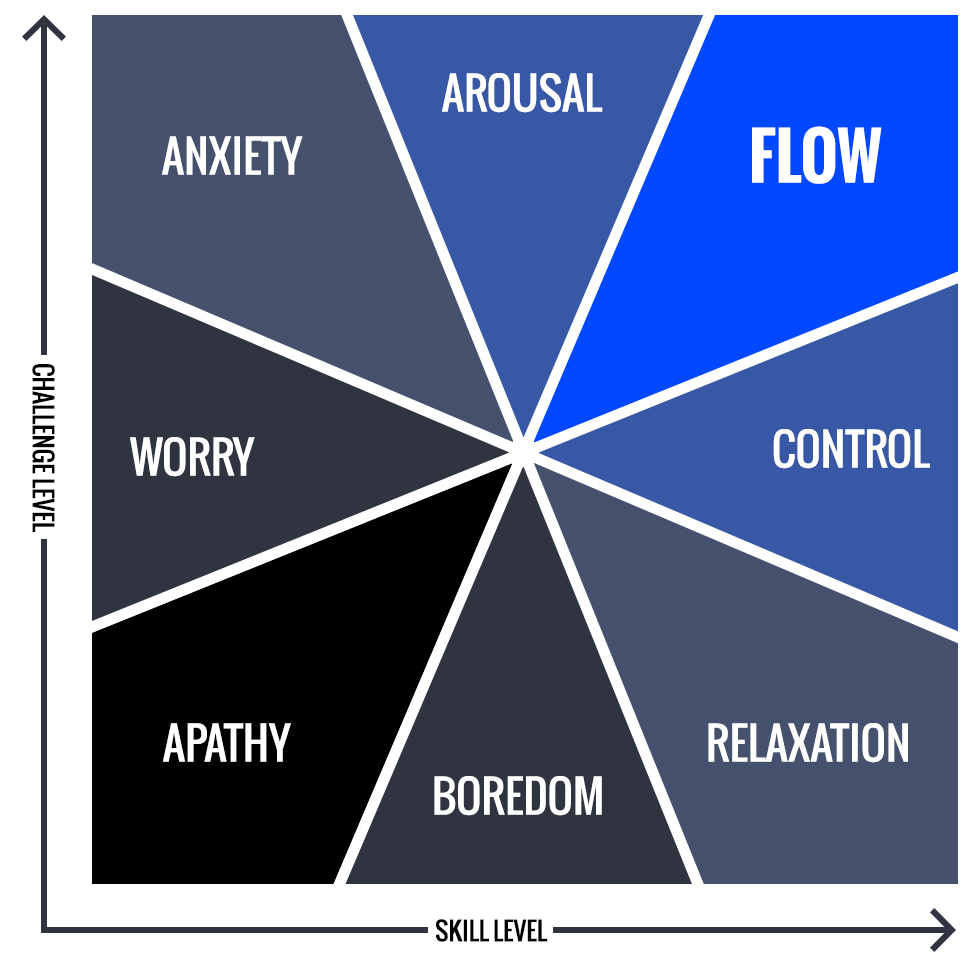Y
ou’re on fire. NBA Jam style.
You’re completely immersed in the task at hand, your ideas arrive one after the other, and everything is coming together perfectly. You see the path forward with clarity and the more you work the more excited you get.
You’ve lost track of time, you’re tired, and haven’t eaten in awhile, but nothing is distracting you from your work.
You’re in the zone, you’re in a state of FLOW.
What Is Flow
According to psychologist Mihály Csíkszentmihályi (I have no idea how to pronounce that), flow is described as follows:
…being completely involved in an activity for its own sake. The ego falls away. Time flies. Every action, movement, and thought follows inevitably from the previous one, like playing jazz. Your whole being is involved, and you’re using your skills to the utmost.
The key to flow is being in the correct work state, which makes all the difference in how productive you are. These work states are broken down into 8 regions that are reached based on the challenge and skill level being engaged.
You can see the 8 work states below and how they related to each other.
Your work state is determined by the level of skill being used and challenge being faced; flow is achieved when you have the highest skill level and challenge to engage with.
You can adjust your activities to enter the appropriate work state, as the key is having a challenge that is difficult, but still attainable based on your skill level.
For example, if you find yourself doing something very challenging, but don’t quite have the skills yet, you’d be in the Arousal State. In this situation, you’re challenging your curiosity and developing your skills. You could either attain the skill level you need or take on a slightly less difficult challenge for which your skills are better matched.
As you can see, it’s all about the balance between challenge and skill.
How To Achieve Flow
Here are six steps you can take to achieve flow in your work.
1. Challenge/Skill Balance
Find something challenging for you, that you enjoy doing, and that you have the skills to be successful at. Too easy and you’ll be bored. Too difficult and you’ll be frustrated.
2. Set Clear Goals/Tasks
You need to know what you want to accomplish. Understanding the tasks and goals makes it easier for you to progress as you engage in the activity.
3. Focus Like A Laser
You must focus on that task at hand, no distractions, no divided attention. The task is your one and only goal and everything else should be shut out.
4. Allocate Enough Time
If you’re trying to achieve flow, you need to give yourself enough time, not only to enter it (which takes about 15 minutes according to research), but to take advantage of it once you’re there.
5. Good Energy
You want to have enough energy to tackle the challenge you’re facing, but also have a clear mind that won’t be distracted or stressed about other parts of your life.
6. Drop The Ego
The activity should be meaningful for it’s own sake, it’s all about creating and NOT specifically the outcome. There should be no fear of failure or anxiety. It’s all about the process.
Want to know more? Check out the book or watch the TED Talk (below) by Mihály Csíkszentmihályi.



Pingback: How Music Enhances Productivity | Judith + Fawkes
Pingback: How To Avoid Interruptions At Work | Judith + Fawkes